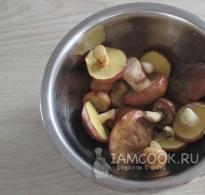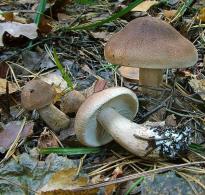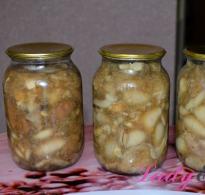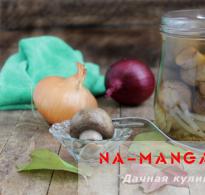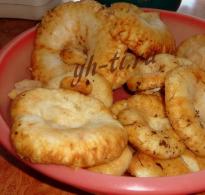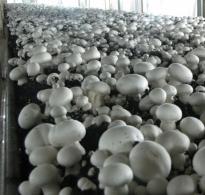Chanterelles
Chanterelles (lat. Cantharellus) - mushrooms that belong to the department of basidiomycetes, class agaricomycetes, order cantarellaceae, family chanterelles, genus chanterelles. These mushrooms are difficult to confuse with others, as they have an extremely memorable appearance.
Chanterelles (mushrooms): description and photo
The body of the chanterelles is shaped like the body of the cap mushrooms, but the cap and leg of the chanterelles are one whole, without visible borders, even the color is approximately the same: from pale yellow to orange. The cap of the chanterelle mushroom is from 5 to 12 centimeters in diameter, irregular in shape, flat, with wrapped, open wavy edges, concave or depressed inward, in some mature individuals it is funnel-shaped. In the people, such a hat is called "in the form of an inverted umbrella." To the touch, the cap of the chanterelle is smooth, with a hard-to-remove skin.
The pulp of chanterelles is fleshy and dense, fibrous in the leg area, white or yellowish in color, has a sour taste and a slight smell of dried fruits. When pressed, the surface of the fungus becomes reddish.
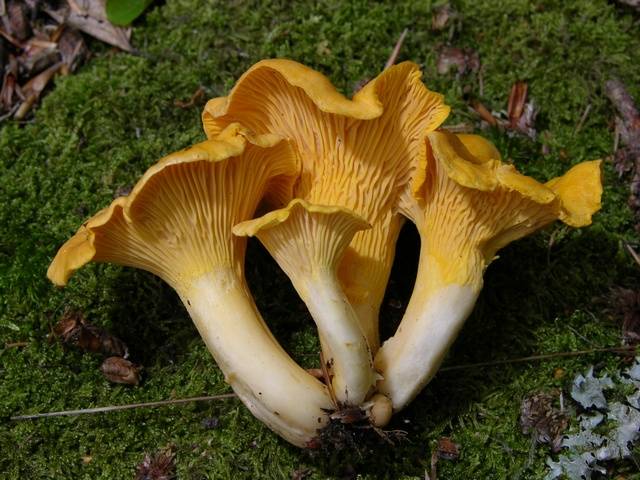
The chanterelle leg is most often the same color as the surface of the cap, sometimes somewhat lighter, has a dense, smooth structure, uniform in shape, slightly narrowed towards the bottom, 1-3 centimeters thick, 4-7 centimeters long.
The surface of the hymenophore is folded, pseudoplastic. Represented by wavy folds falling down the leg. In some species of chanterelles, it can be veiny. The spore powder is yellow in color, the spores themselves are ellipsoidal, 8 * 5 microns in size.
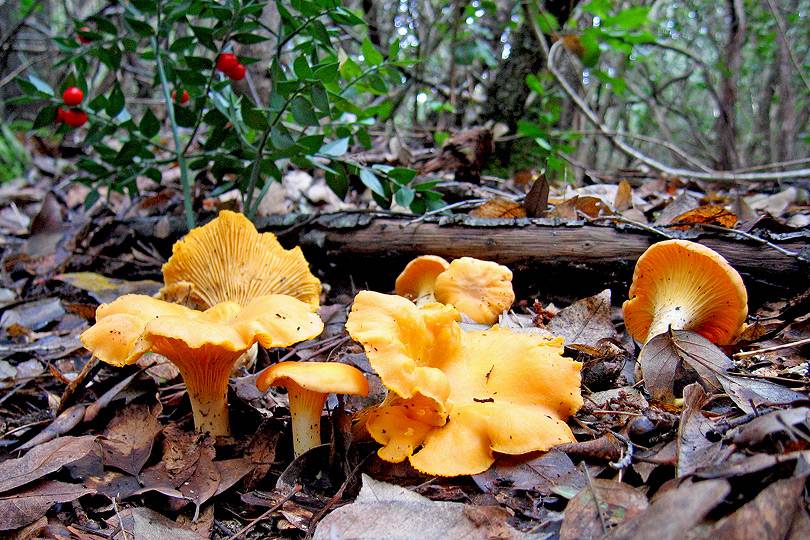
Where, when and in what forests do chanterelles grow?
Chanterelles grow from early June to mid-October, mainly in coniferous or mixed forests, near, or. They are more common in damp areas, in temperate forests among grass, in moss, or in a pile of fallen leaves. Chanterelles often grow in numerous groups, appear en masse after thunderstorms.
Chanterelle species, names, descriptions and photos
There are over 60 types of chanterelles, many of which are edible. Poisonous chanterelles do not exist, although there are inedible species in the genus, for example, a false chanterelle. Also, this mushroom has poisonous counterparts - for example, mushrooms of the genus Omphalote. Below are some varieties of chanterelles:
- Chanterelle ordinary (real chanterelle, cockerel) (lat. Canthar ellusciba rius)
The common chanterelle grows in deciduous and coniferous forests in June, and then from August to October.
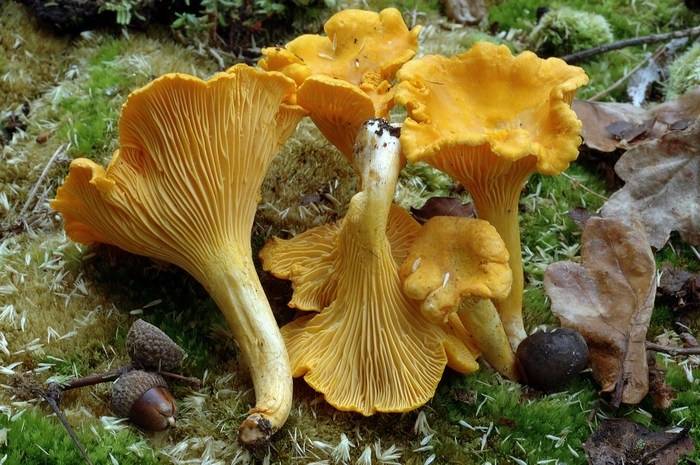
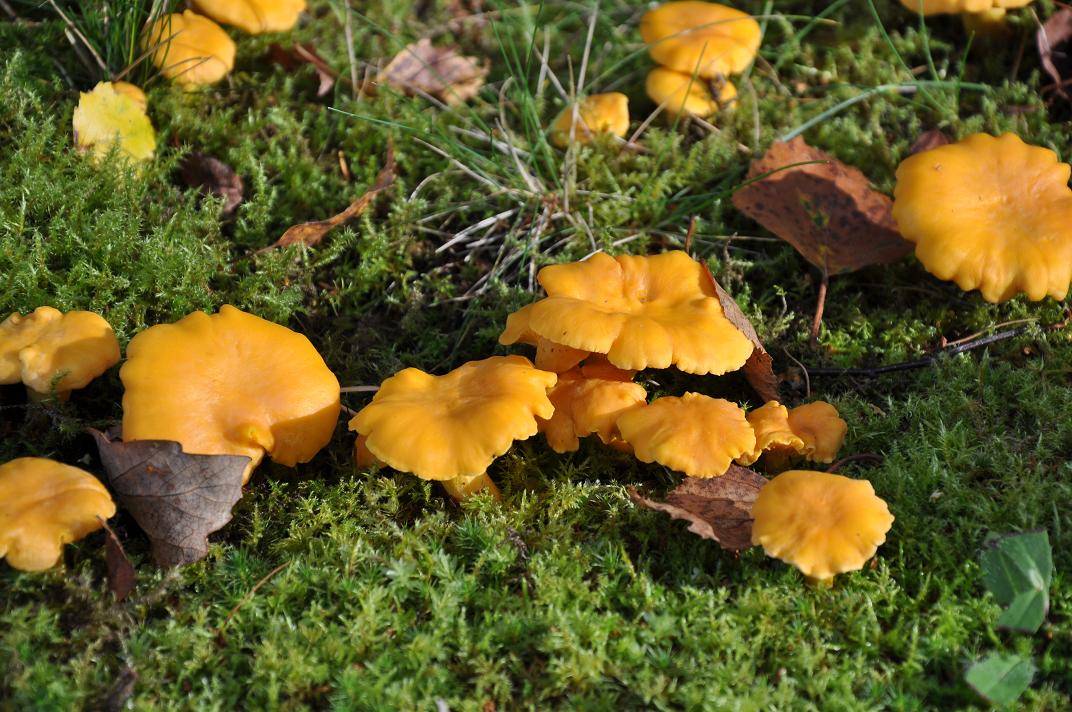
- Chanterelle gray (lat. Cantharellus cinereus)
Edible mushroom gray or brown-black. The hat has a diameter of 1-6 cm, the height of the stem is 3-8 cm, the thickness of the stem is 4-15 mm. The leg is hollow inside. The cap has wavy edges and a depression in the center, the edges of the cap have an ash-gray tint. The pulp is elastic, gray or brownish. The hymenophore is folded. The taste of the mushroom is inexpressive, without aroma.
The gray fox grows in mixed and deciduous forests from late July to October. This mushroom can be found on the territory of the European part of Russia, Ukraine, America and Western Europe. The gray fox is known to few, so mushroom pickers avoid it.
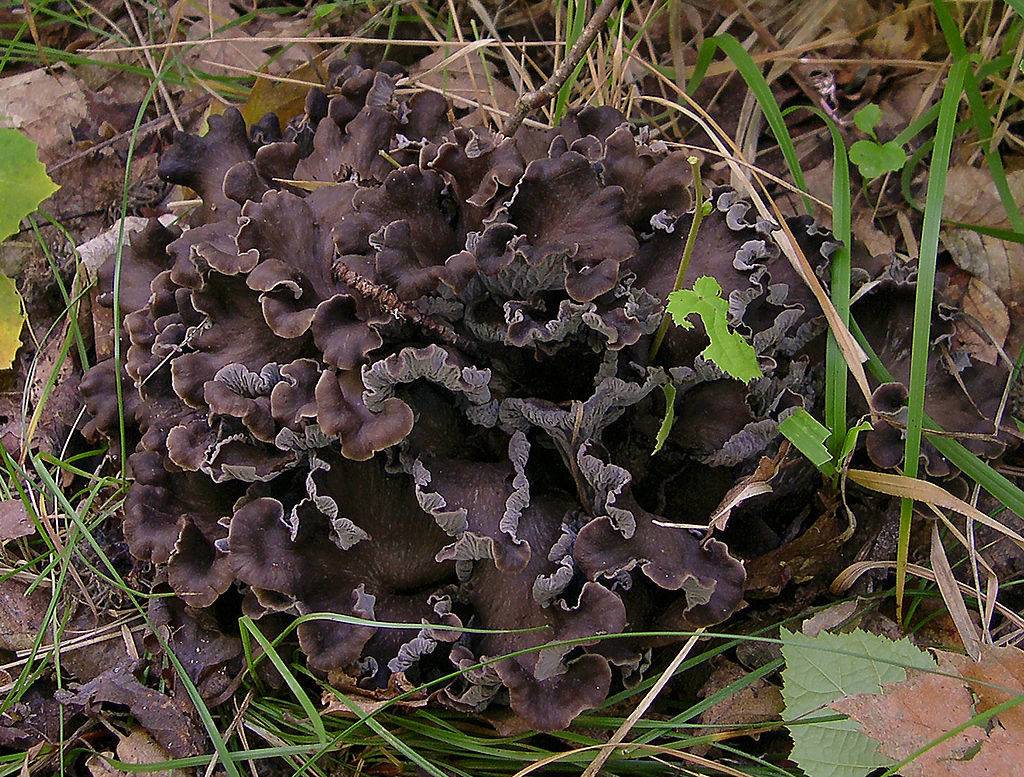
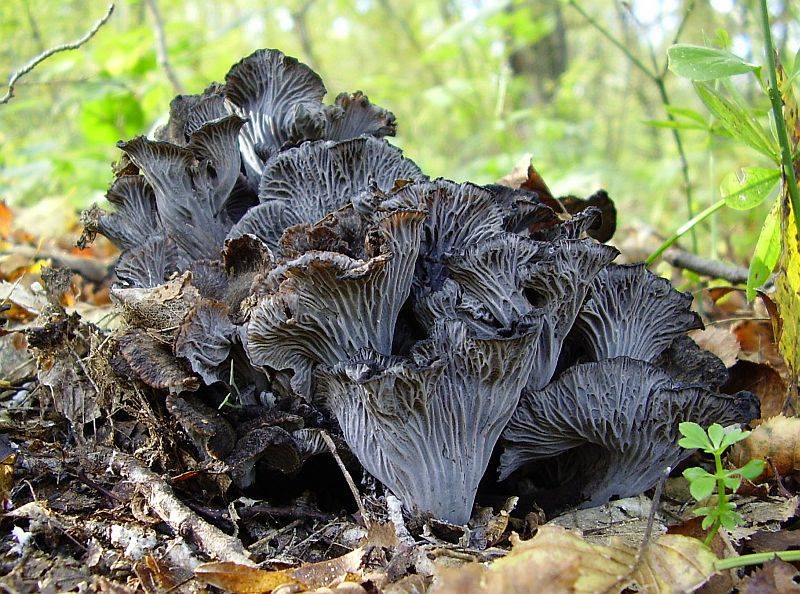
- Chanterelle cinnabar red (lat. Cantharellus cinnabarinus)
An edible mushroom that is reddish or pinkish red in color. The cap diameter is 1-4 cm, the height of the stem is 2-4 cm, the flesh is fleshy with fibers. The edges of the cap are uneven, curved, the cap itself is concave towards the center. The hymenophore is folded. Thick pseudoplates are pink. Spore powder is pink-cream.
The cinnabar chanterelle grows in deciduous forests, predominantly oak groves, in eastern North America. The mushroom picking season is summer and autumn.
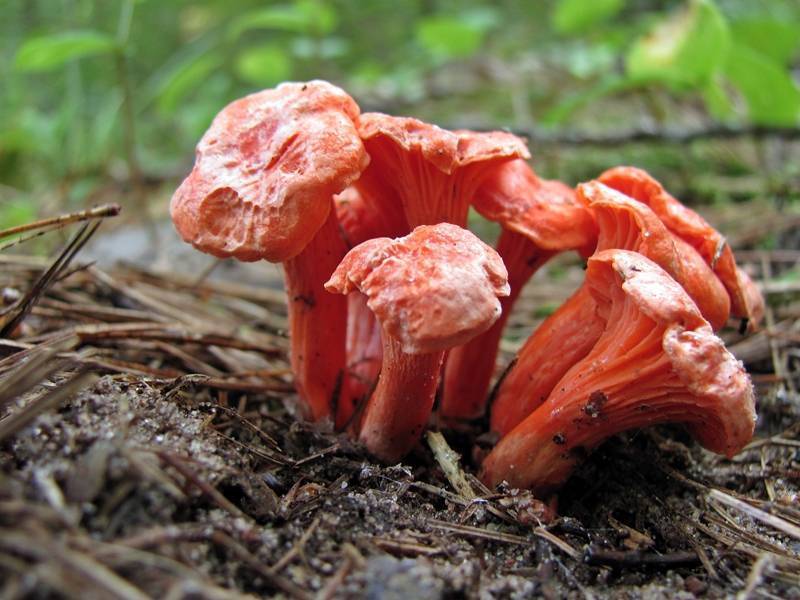
- Chanterelle velvety (lat. Cantharellus friesii)
An edible but rare mushroom with an orange-yellow or reddish cap. The color of the legs is from light yellow to light orange. The cap diameter is 4-5 cm, the height of the stem is 2-4 cm, the diameter of the stem is 1 cm. The cap of a young mushroom has a convex shape, which turns into a funnel-shaped one with age. The flesh of the cap is light orange when cut, whitish-yellowish in the stem. The smell of the mushroom is pleasant, the taste is sour.
The velvety chanterelle grows in the countries of southern and eastern Europe, in deciduous forests on acidic soils. Harvesting season is from July to October.
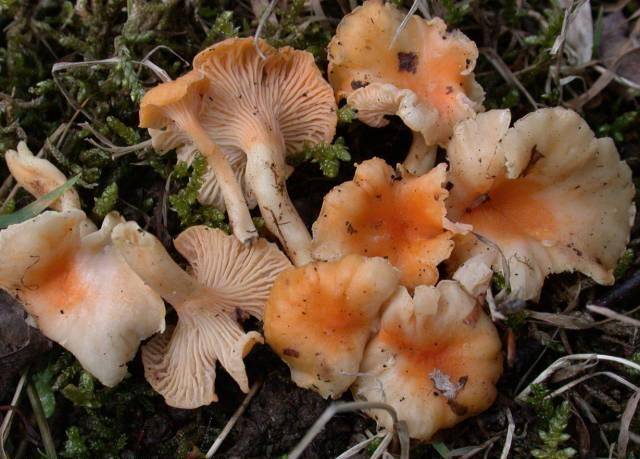
- Chanterelle faceted (lat. Cantharellus lateritius)
Edible orange-yellow mushroom. The fruiting body has dimensions from 2 to 10 cm. The cap and stem are combined. The shape of the cap is carved with a wavy edge. The pulp of the mushroom is thick and dense, has a pleasant taste and aroma. The diameter of the stem is 1-2.5 cm. The hymenophore is smooth or with small folds. The spore powder has a yellow-orange color, like the fungus itself.
The faceted chanterelle grows in oak groves in North America, Africa, the Himalayas, Malaysia, singly or in groups. You can collect chanterelle mushrooms in summer and autumn.
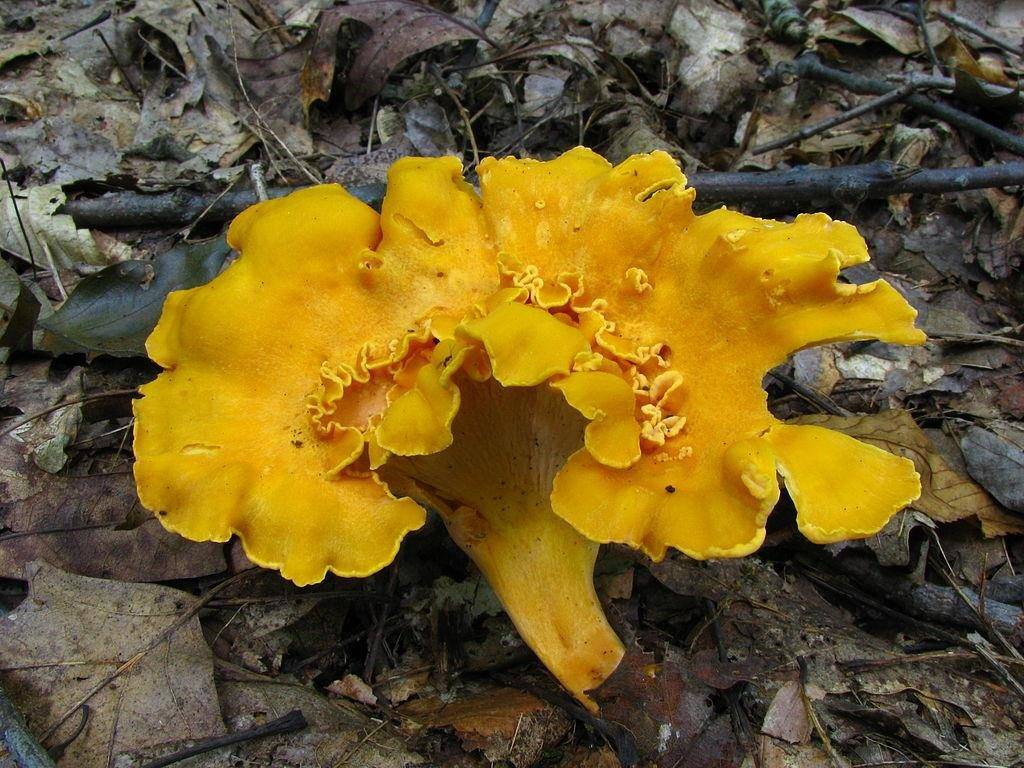
- Chanterelle yellowing (lat. Cantharellus lutescens)
Edible mushroom. The diameter of the cap is from 1 to 6 cm, the length of the leg is 2-5 cm, the thickness of the leg is up to 1.5 cm. The cap and the leg are a single whole, like in other types of chanterelles. The upper part of the cap is yellow-brown, with brown scales. The stem is yellow-orange. The pulp of the mushroom is beige or light orange, has no taste and smell. The spore-bearing surface is most often smooth, rarely wrinkled, and has a beige or yellow-brown tint. Spore powder is beige-orange.
The yellowing chanterelle grows in coniferous forests, on moist soils, bears fruit until the end of summer.
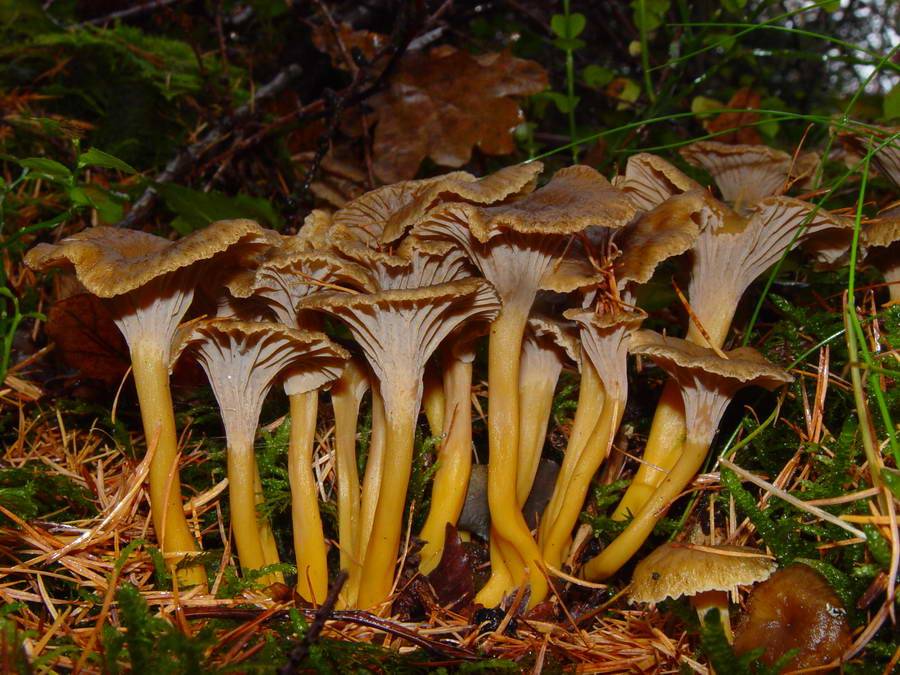
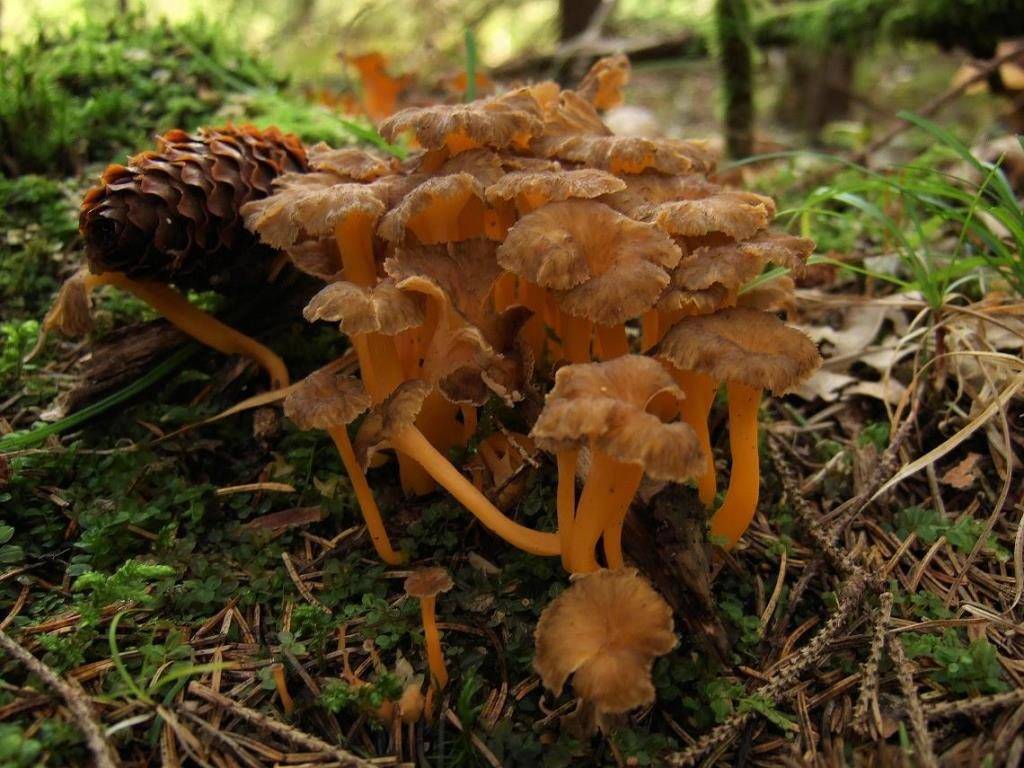
- Chanterelle tubular (funnel chanterelle, tubular cantarell, tubular lobe) (lat. Cantharellus tubaeformis)
An edible mushroom with a cap diameter of 2-6 cm, a stem height of 3-8 cm, a stem diameter of 0.3-0.8 cm. The cap of a chanterelle has the shape of a funnel with jagged edges. The color of the cap is grayish-yellow. It has dark velvety scales. The tubular leg is yellow or dull yellow. The flesh is firm and white, with a slight bitter taste and a pleasant smell of earth. The hymenophore is yellowish or bluish-gray in color, consists of rare brittle veins. Beige spore powder.
Trumpet chanterelles grow mainly in coniferous forests, sometimes found in deciduous forests in Europe and North America.
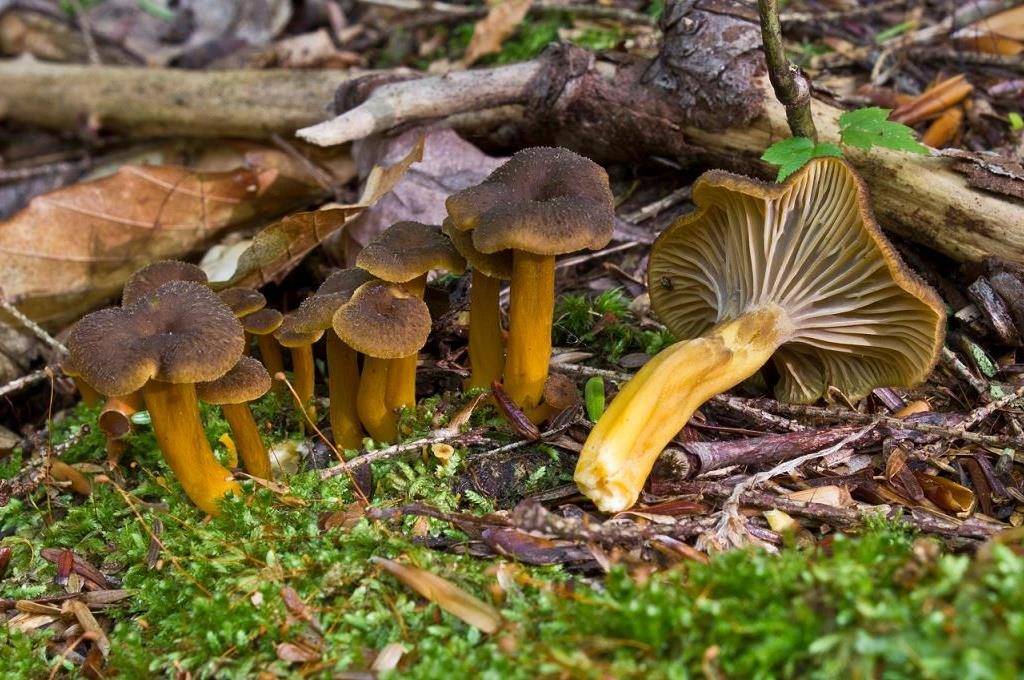
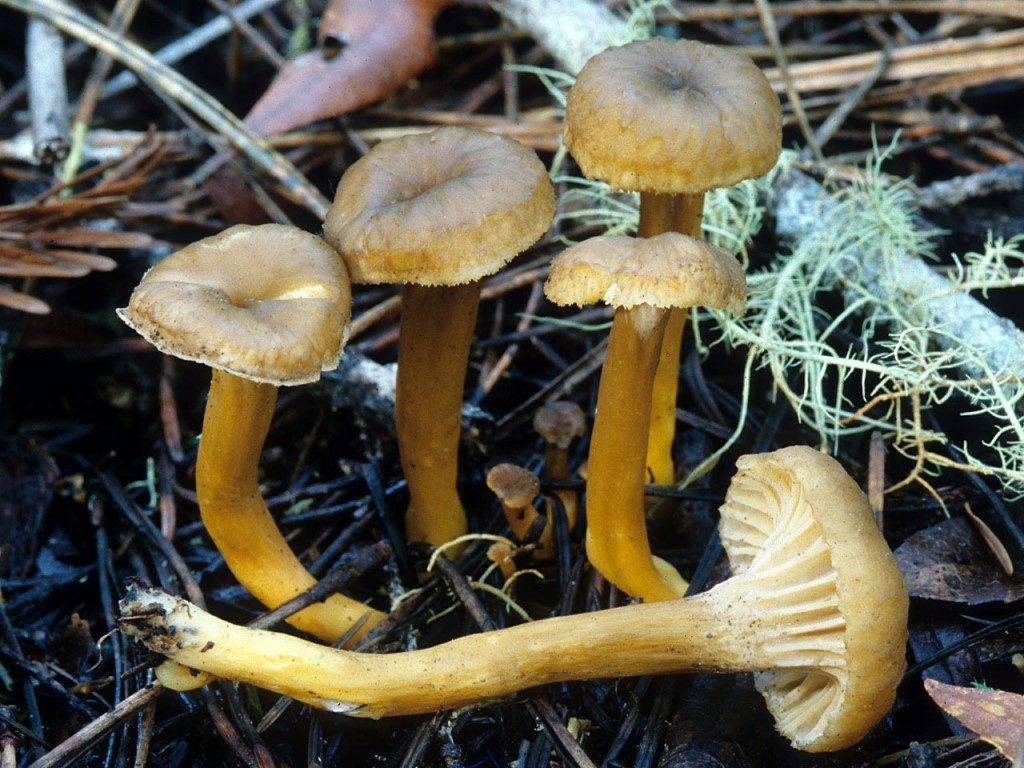
- Chanterelle Cantharellus minor
An edible mushroom similar to the common chanterelle, but smaller in size. The diameter of the cap is 0.5-3 cm, the length of the stem is 1.5-6 cm, the thickness of the stem is 0.3-1 cm. The cap of a young mushroom is flat or convex, in a mature mushroom it becomes vase-like. The color of the cap is yellow or orange-yellow. The edge of the cap is wavy. The flesh is yellow, brittle, soft, with a barely perceptible aroma. The hymenophore has the color of a cap. The color of the stem is lighter than that of the cap. The stem is hollow, tapering towards the base. The spore powder is white or yellowish in color.
These mushrooms grow in deciduous forests (most often oak) in eastern North America.
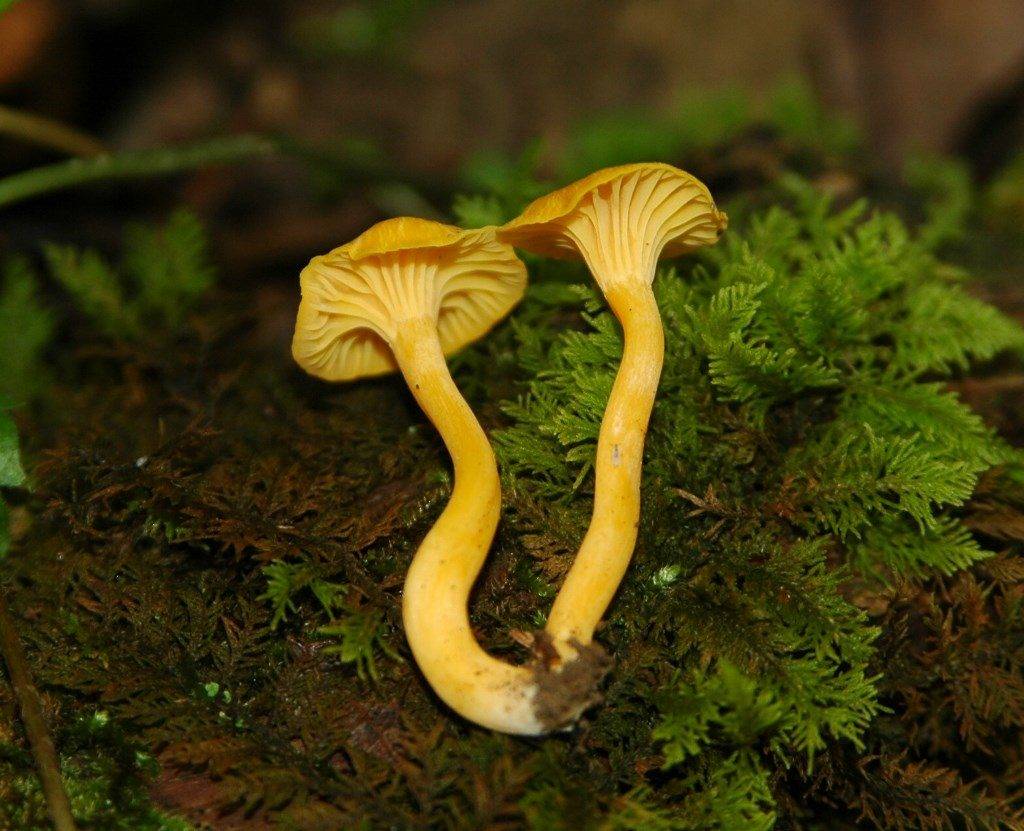
- Chanterelle Cantharellus subalbidus
An edible mushroom that is whitish or beige in color. Turns orange when touched. Wet mushroom takes on a light brown hue. The cap diameter is 5-14 cm, the height of the stem is 2-4 cm, the thickness of the stem is 1-3 cm. The cap of a young mushroom is flat with a wavy edge, becoming funnel-shaped as the mushroom grows. Velvet scales are located on the skin of the cap. The pulp of the mushroom has no aroma and taste. The hymenophore has narrow folds. The leg is fleshy, white, uneven or smooth. Spore powder is white.
Cantharellus subalbidus grows in the northwestern part of North America, found in coniferous forests.
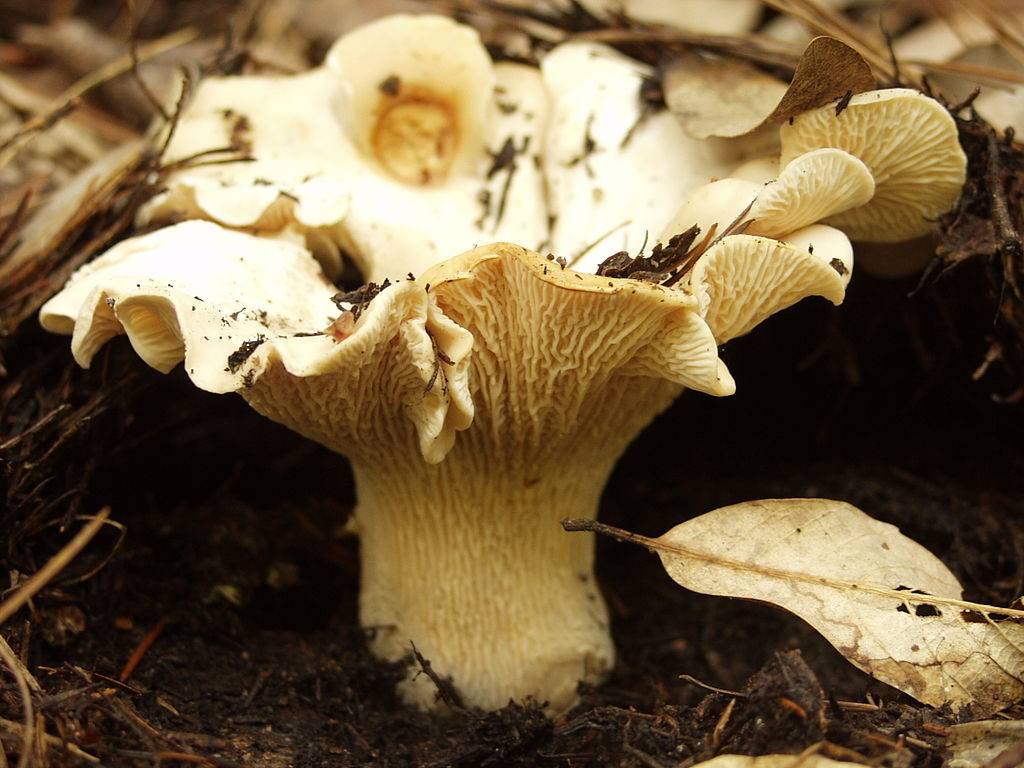
False chanterelles: description and photo. How are they different from edibles?
There are 2 types of mushrooms with which you can confuse an ordinary chanterelle:
- Orange talker (inedible mushroom)
- Omphaloth olive (poisonous mushroom)
The main differences between an edible chanterelle and a false one:
- The color of an ordinary edible chanterelle is monophonic: light yellow or light orange. False chanterelle usually has brighter or lighter colors: copper red, bright orange, yellowish white, ocher beige, reddish brown. The middle of the cap of the false chanterelle may differ in color from the edges of the cap. On the hat of the false chanterelle, spots of various shapes can be observed.
- The edges of the cap of a real chanterelle are always torn. The false mushroom often has smooth edges.
- The leg of a real chanterelle is thick, the leg of a false chanterelle is thin. In addition, in an edible chanterelle, the hat and leg are a single whole. And in a false chanterelle, the leg is separated from the hat.
- Edible chanterelles always grow in groups. False chanterelle can grow singly.
- The smell of an edible mushroom is pleasant, unlike an inedible one.
- When pressed, the pulp of the edible chanterelle turns red, the color of the false chanterelle does not change.
- Real chanterelles are not wormy, which cannot be said about their poisonous counterparts.
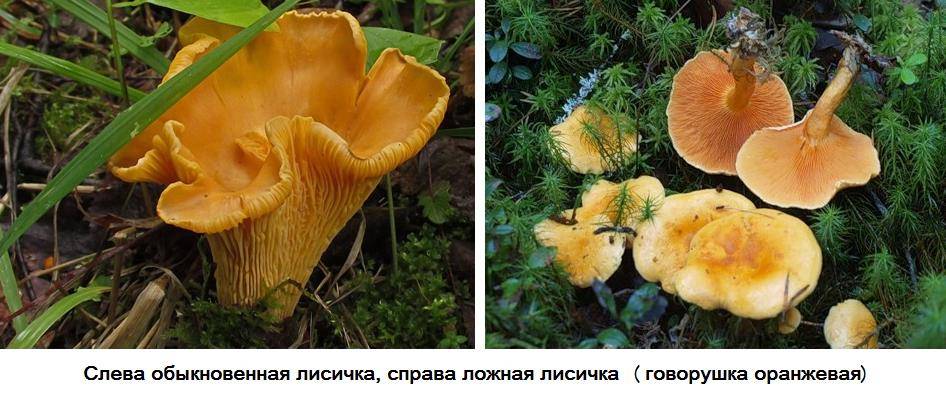
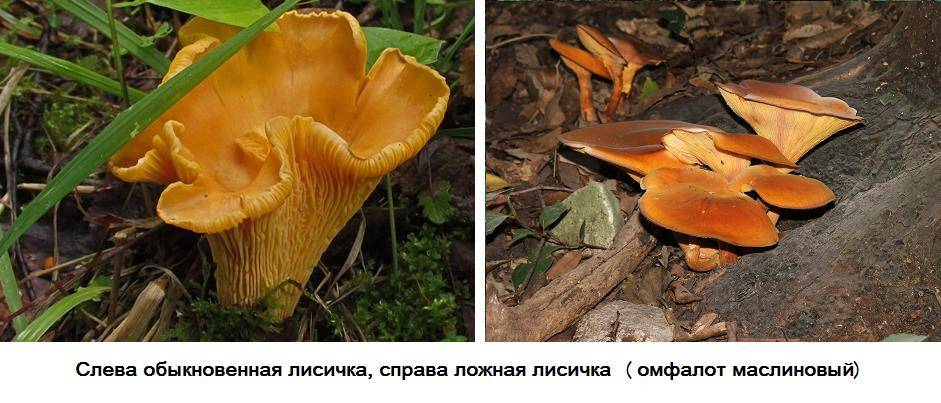
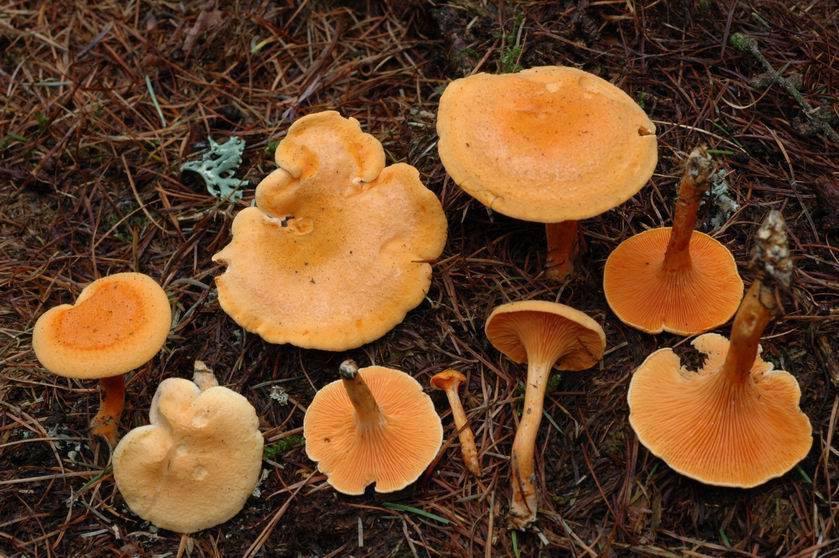
False fox or orange talker
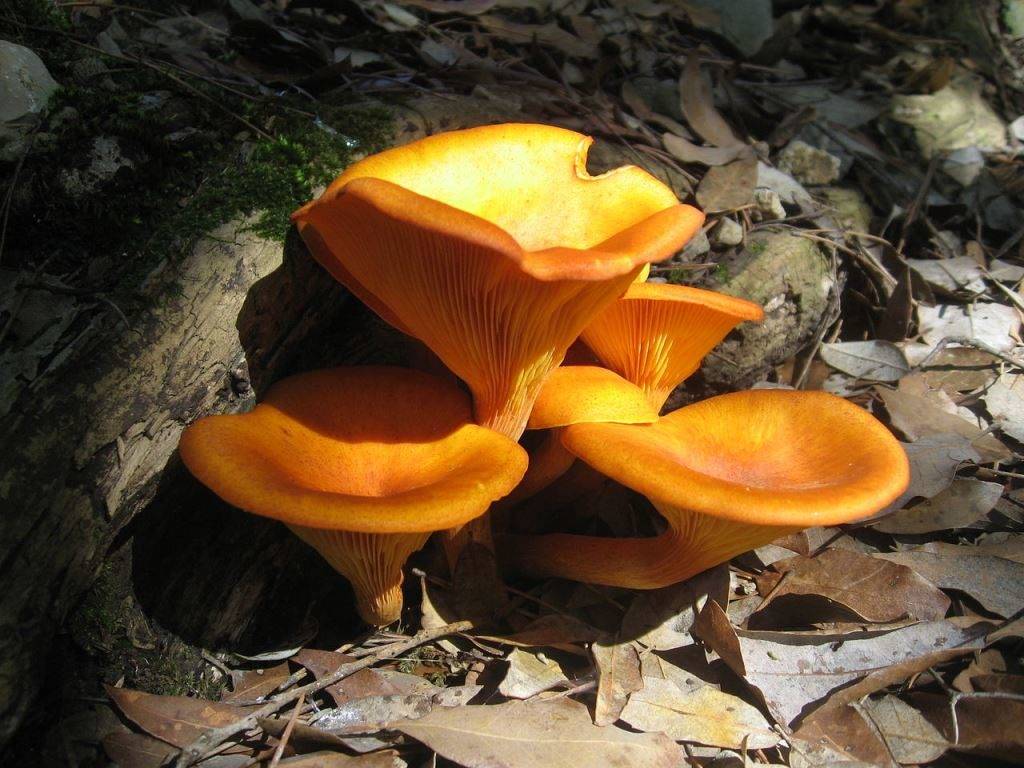
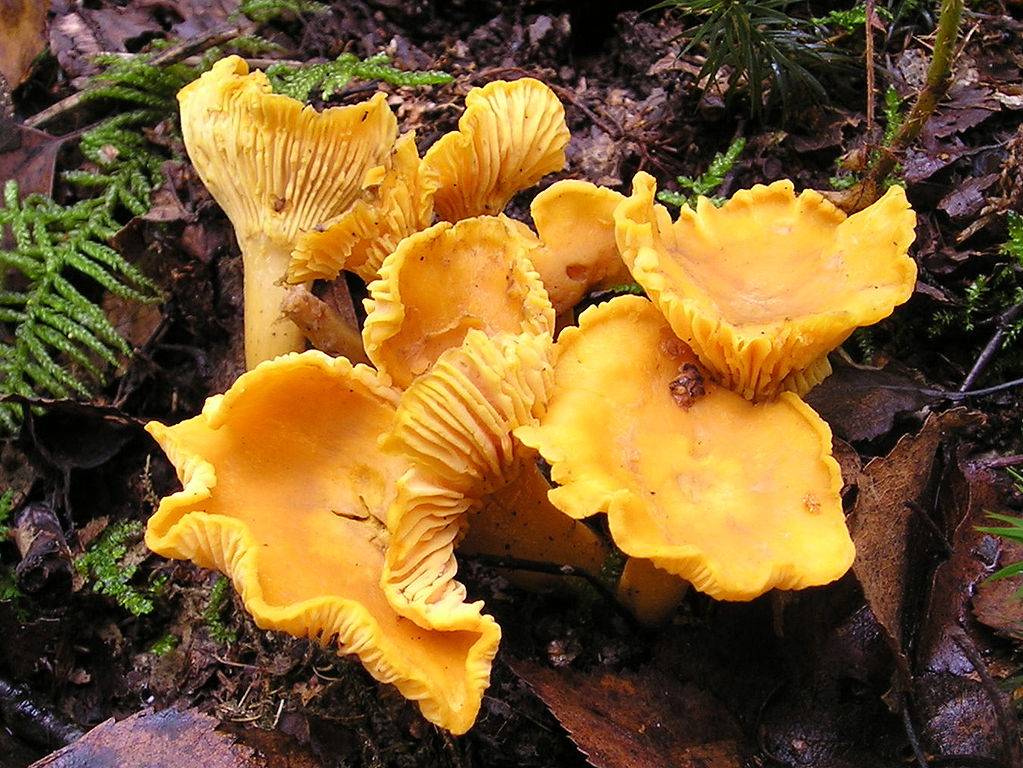
Calorie content of chanterelles
The calorie content of chanterelles per 100 g is 19 kcal.
How and how long can fresh chanterelles be stored?
Mushrooms should be stored at a temperature not exceeding +10°C. Freshly harvested chanterelles cannot be kept for more than a day, even in the refrigerator. It is best to start processing them immediately.
How to clean chanterelles?
Mushrooms must be cleaned of debris and damaged mushrooms should be separated from whole ones. Forest debris is removed with a hard brush or soft cloth (sponge). Dirt does not stick to the surface of the chanterelles so strongly that it needs to be cleaned off with a knife. The rotten, softened and damaged parts of the fungus are cut off with a knife. Rubbish is removed from the plates with a brush. This is especially important for subsequent drying.
After cleaning, the chanterelles should be washed well, paying special attention to the cap plates. Usually they are washed in several waters. If a bitter taste is suspected, the mushrooms are soaked for 30-60 minutes.

